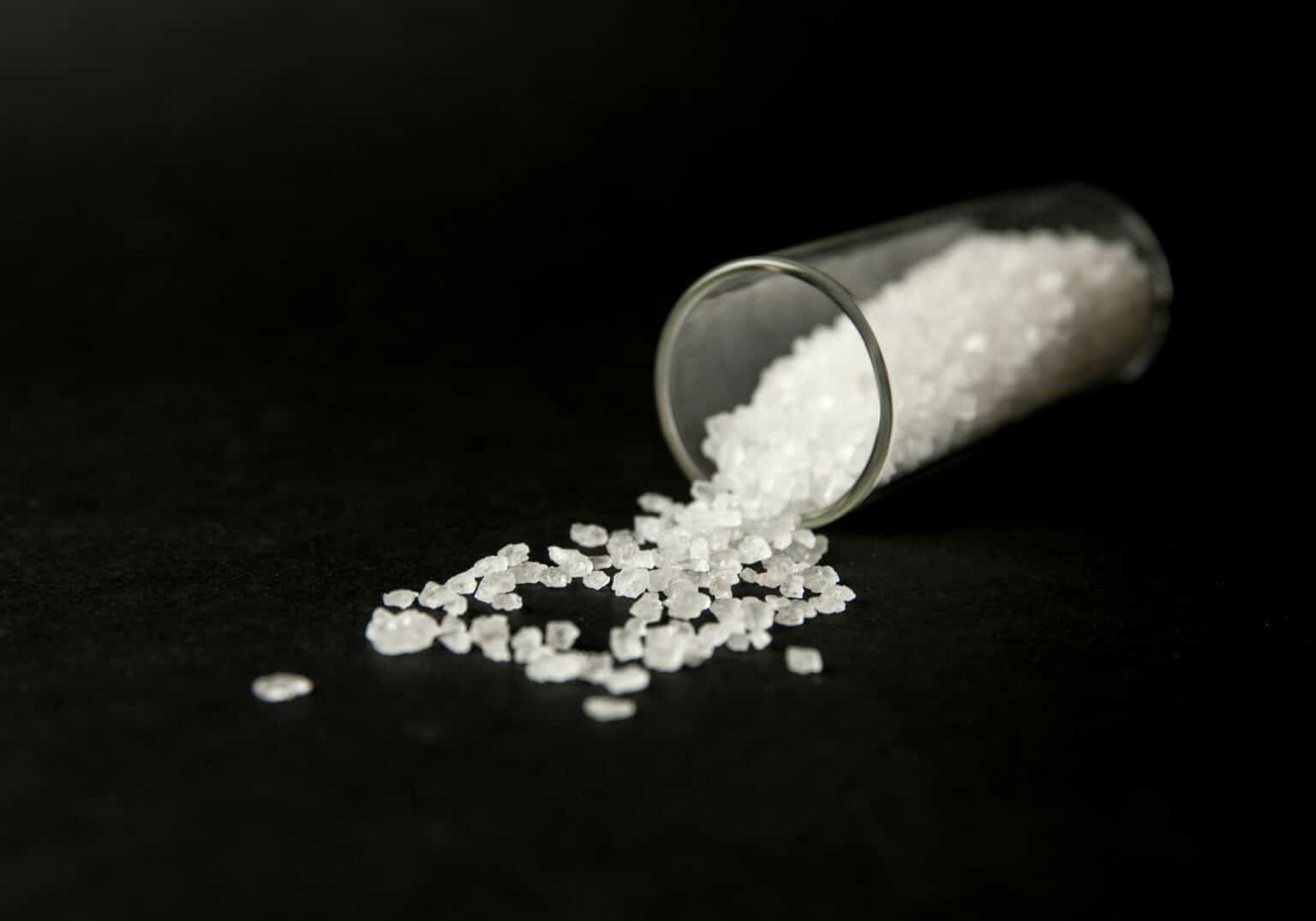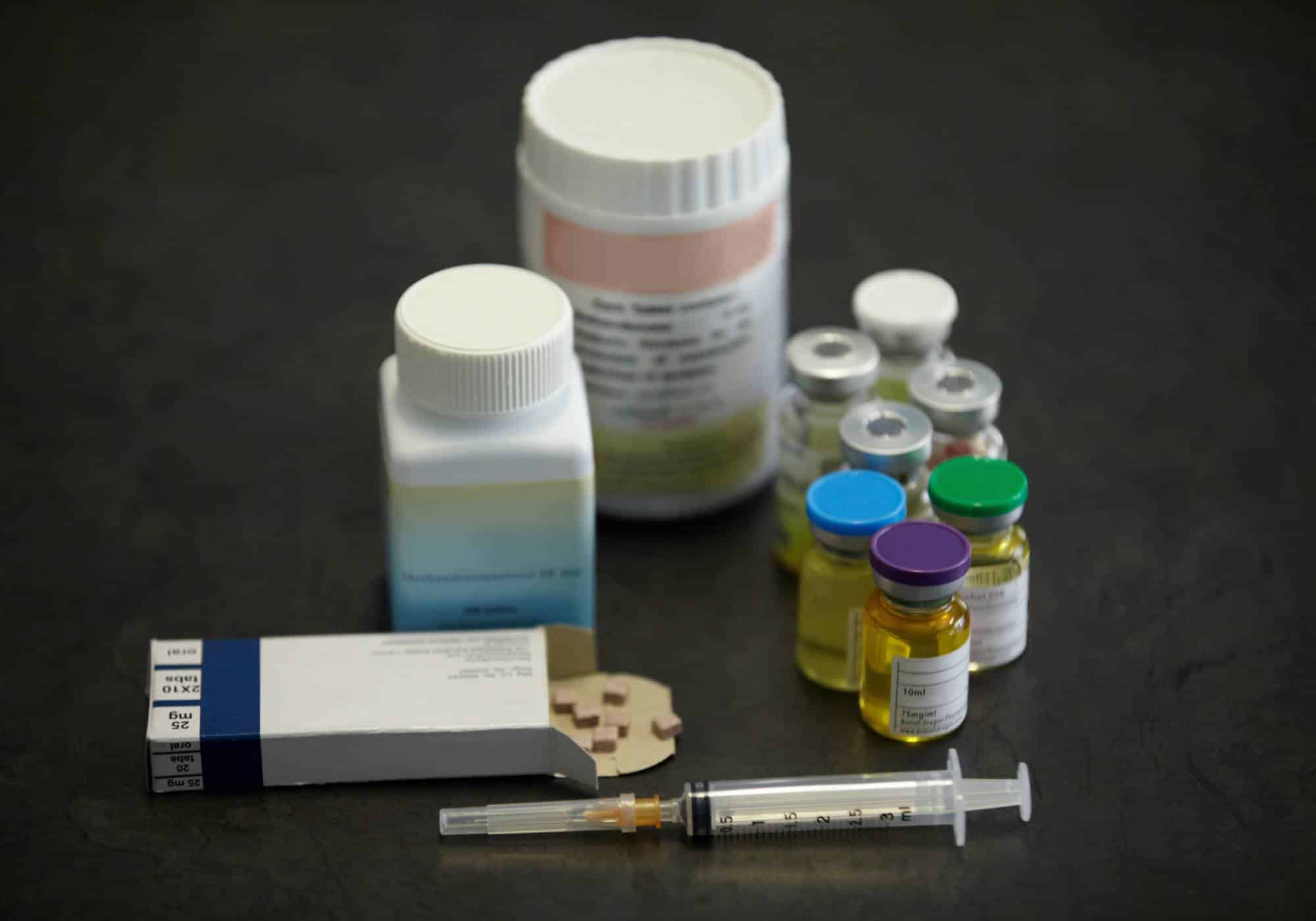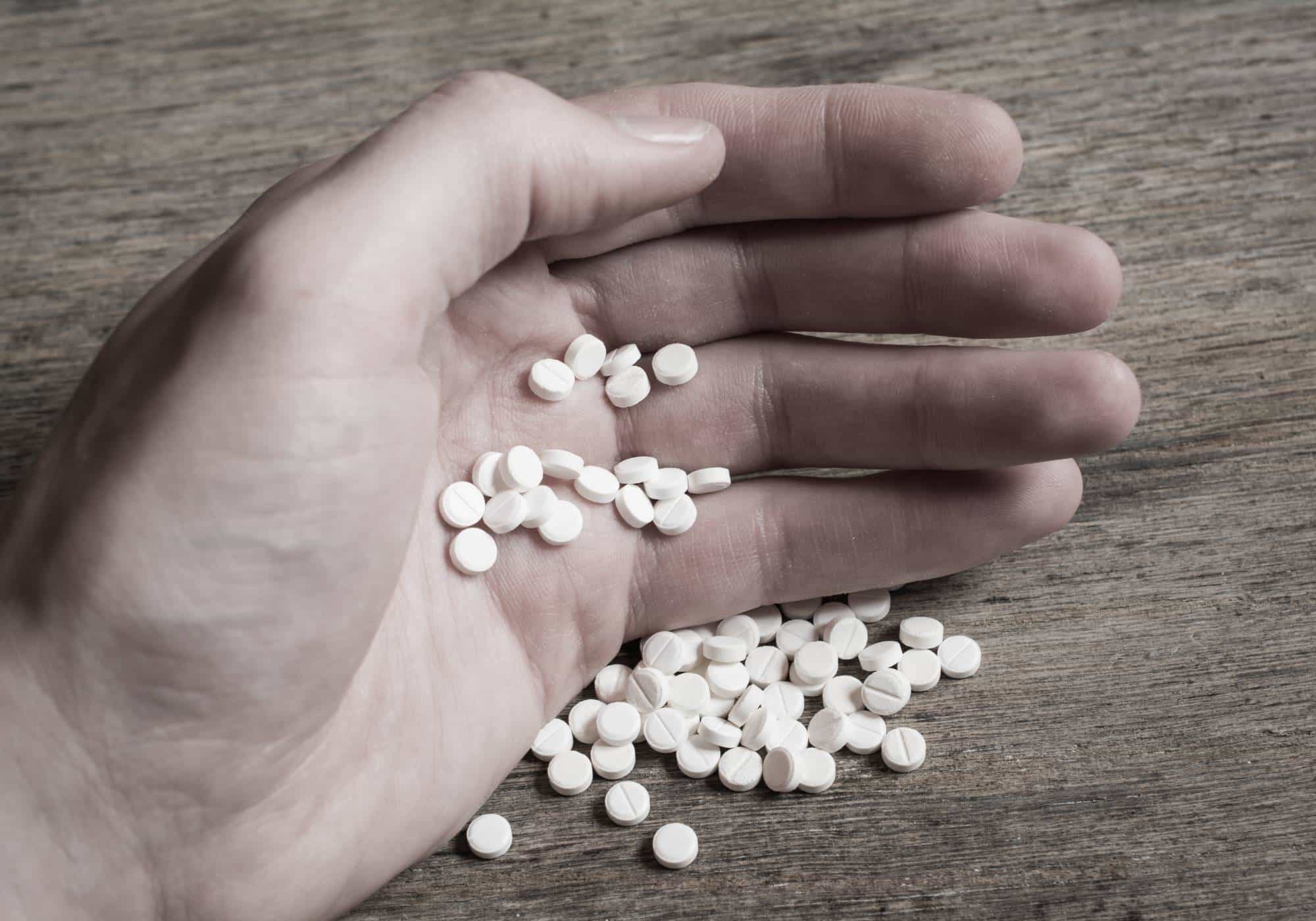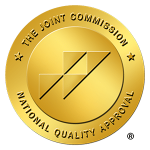MDPV belongs to a new class of drugs called synthetic cathinones, which are sometimes called or marketed as “bath salts.” These drugs are highly potent and dangerous. Because this is a relatively new drug that people are using, little research has been done on humans. Most of the information out there is based on rat trials and accounts from people who have used MDPV recreationally. Regardless of this information, MDPV is dangerous and can lead to long-term health complications and death.
Read on to learn more about the risks of MDPV abuse, MDPV addiction, and how to get help if you or a loved one has lost control of their drug use.
What Is MDPV?
MDPV stands for 3,4-methylenedioxypyrovalerone, a synthetic substance that belongs to the cathinone family. This category of drugs shares a close chemical resemblance to MDMA (3,4-methylenedioxymethamphetamine), commonly known as ecstasy. Originating from the khat plant, which is native to South America and often chewed for its energizing effects, MDMA has a well-documented history. However, MDPV is a relatively recent compound, primarily found in what are known as “bath salts.” These are part of a growing trend of synthetic stimulants that pose a significant concern across the United States due to their potential dangers.
MDPV and other synthetic cathinones bear a chemical similarity to amphetamines, including ecstasy. Yet, MDPV’s effects on the brain are more akin to those of cocaine, making it notably potent. Both cocaine and MDPV increase dopamine levels in the brain, which can cause a surge in energy, a heightened mood, and increased anxiety. Remarkably, MDPV is considered to be up to ten times more potent than cocaine, highlighting its intense impact.
Typically, MDPV appears as a white or light brown powder. It might be somewhat clumpy and emit a distinct odor. On occasion, this drug is also available in pill or tablet form, offering a deceptive appearance that may downplay its potent effects.
Effects of MDPV
MDPV has a profound impact on both the mind and body, blending stimulant and hallucinogenic properties. The experiences of individuals using MDPV can greatly vary, leading to drastic shifts in mood and perception. Commonly reported effects of MDPV include:
- Accelerated heart rate
- Elevated blood pressure
- Intense feelings of happiness or euphoria
- Heightened sensory experiences
- Severe episodes of panic
- Vivid hallucinations
- Aggressive or violent actions
- Risk of seizures
- Potential for fatal outcomes
Despite its similarities to the effects of cocaine, MDPV stands out due to its exceptional potency—being at least ten times stronger—and its ability to induce symptoms long after it has been metabolized by the body. This potency often leads to a rapid onset of addiction, as individuals may find themselves consuming increasing amounts of the substance in an attempt to recapture the initial euphoric state.
Many opt for MDPV as a less expensive alternative to cocaine or methamphetamine, attracted by its similar euphoric effects. However, the allure of these euphoric sensations often masks the thin line between pleasure and the more adverse reactions such as hallucinations or aggression that can also emerge.
For those navigating the challenges of substance abuse and mental health issues, or their loved ones, understanding the multifaceted effects of MDPV is crucial. Recognizing the signs and seeking support early can make a significant difference in the journey towards recovery and well-being.
How Does MDPV Work?
MDPV uniquely interacts with the brain’s natural chemical messengers. It specifically targets and binds to the transporters of dopamine, serotonin, and norepinephrine. This action prevents these crucial neurotransmitters from being reabsorbed as quickly as normal, allowing them to remain active in the brain for extended periods. The result is a significant alteration in mood and behavior patterns.
When individuals use stimulants such as MDPV, as well as MDMA, methamphetamine, and cocaine, they typically experience a boost in physical energy and sociability, a decrease in inhibitions, and feelings of intense joy and exhilaration. However, these uplifting effects can swiftly give way to negative reactions, including heightened anxiety, paranoia, and in some instances, aggressive tendencies.
Given that MDPV is relatively new to the scene, there’s still much to learn about its long-term effects and potential for addiction. However, by comparing it to substances with known addictive properties and similar effects—such as MDMA, cocaine, and meth—it’s reasonable to consider that MDPV may also encourage compulsive use due to its significant impact on the brain’s chemistry.
For individuals dealing with substance use issues and their loved ones, understanding how MDPV operates within the brain is crucial for recognizing the risks associated with its use and the importance of seeking support.
Street Names for MDPV
MDPV is known on the streets by various names, reflecting its potency and effects. Some of the most widely recognized aliases include Super Coke, Maddie, Magic, Vanilla Sky, and Bloom. Other names like Scarface, Ivory Wave, and Cosmic Blast also circulate among users, hinting at the drug’s powerful and often unpredictable impact.
What Does MDPV Look Like and How is it Used?
MDPV typically appears as crystals. Users commonly crush these crystals into a fine powder for snorting, embracing the drug’s rapid onset of effects. Besides snorting, MDPV can be smoked or dissolved into a liquid form, which some choose to inject directly into their veins, seeking an even more immediate and intense experience.
Is MDPV Illegal?
In response to the harmful consequences of its widespread use, the United States Federal Government has banned MDPV along with at least 24 other substances commonly found in “bath salts.” Despite the ban, the sheer variety of these synthetic drugs poses a significant challenge to lawmakers, as manufacturers continually alter their formulas. Producers exploit legal loopholes by marketing these substances under the guise of not being intended for human consumption. However, the law is clear: any substance designed to mimic the effects of controlled drugs, intended for human use, is illegal. This legislative action underscores the government’s commitment to combating the spread and use of potentially dangerous synthetic drugs like MDPV.
Why Is MDPV So Dangerous?
MDPV poses significant dangers due to its powerful impact on the brain’s chemical processes. It disrupts the normal recycling of critical neurotransmitters like dopamine, serotonin, and norepinephrine by the brain. This disruption leads to an accumulation of these chemicals, triggering intense feelings of euphoria. This heightened state becomes a “new normal” for the user, compelling them to consume increasingly larger doses to recapture the initial euphoria, which is a key factor in the substance’s high potential for addiction.
However, the dangers of MDPV extend beyond its addictive properties. It is also known for causing severe psychoactive and physical side effects, some of which can be life-threatening. Users may experience acute delirium, escalate into violent behaviors, and show an increased risk of self-harm. As a designer drug, MDPV’s composition can vary significantly, with different batches containing various chemicals that may amplify these adverse effects.
One of the most alarming aspects of MDPV use is the duration of its side effects and behavioral changes, which can persist for up to four weeks after consumption. Furthermore, the comedown from MDPV can induce severe withdrawal symptoms, including depression, panic attacks, delirium, aggression, and even psychotic episodes. Attempts to alleviate these withdrawal symptoms by using more of the drug can lead to a vicious cycle, exacerbating the very symptoms individuals seek to avoid. This cycle highlights the profound dangers associated with MDPV, underscoring the need for awareness and caution among users and their loved ones.
Why Do People Use MDPV?
The allure of MDPV or bath salts lies in its potent and addictive nature, despite its highly toxic effects. Individuals often find themselves returning to the substance even after encountering life-threatening situations or hospitalizations. The intensity of MDPV’s effects can lead users back into a state of psychosis long after the drug has left their system, with even a single use having the potential to cause irreversible brain damage. The most perilous aspect of MDPV usage is the powerful, insatiable cravings it induces, both physically and psychologically, driving individuals to continually seek out the drug.
Despite its addictive potential, the journey with MDPV addiction is typically short-lived due to the heightened risk of overdose, fatal outcomes, and legal issues leading to incarceration. The path of addiction not only jeopardizes one’s health but also strains relationships, disrupts careers, depletes financial resources, and deteriorates overall quality of life.
Addressing MDPV abuse often necessitates interventions from a circle of support including medical professionals, legal authorities, friends, family, and employers. Fortunately, there are numerous treatment options available tailored to those struggling with MDPV abuse. Effective treatment usually requires a long-term commitment and often involves addressing co-existing mental health or psychological conditions, following a dual diagnosis approach. This comprehensive treatment pathway underscores the importance of seeking and offering support to navigate the challenges of overcoming MDPV addiction in Atlanta, GA.
How Long Does MDPV Stay in Your System?
The duration MDPV remains in the system varies, typically spanning from 48 to 72 hours for most individuals. However, for those who use the drug more frequently or in larger amounts, traces of MDPV can be detected for an extended period. The complex chemical structure of MDPV and its various formulations can also pose challenges for its detection through standard drug testing methods. This variability underscores the importance of considering individual factors and the specific nature of the substance when assessing its presence in the body.
MDPV Addiction
MDPV stands out among substances of abuse for its particularly high risk of both physical and psychological dependency. Its mechanism of action as a potent inhibitor of dopamine and norepinephrine reuptake places it in the same category as powerful stimulants like methamphetamine and cocaine, highlighting its potential for addiction. MDPV’s effectiveness in blocking the reuptake of dopamine is notably higher than that of other cathinones, making it more potent than even methamphetamine and MDMA in this aspect.
Insights from recent studies conducted by the National Institute on Drug Abuse (NIDA) reveal that MDPV’s addictive qualities surpass those of other cathinones, such as mephedrone and methylone, which are already known for their high dependency risks. This research underscores the seriousness of MDPV addiction and the importance of seeking professional medical assistance for those caught in its grip. Engaging with healthcare providers can offer the most effective strategies for overcoming MDPV addiction, paving the way for recovery and healing.
MDPV Withdrawal Symptoms
Individuals who have been using MDPV especially in high doses or regularly, might face withdrawal symptoms when they reduce their dosage or discontinue use. The MDPV withdrawal can be challenging, with symptoms that may include:
- Feelings of depression
- Increased anxiety
- Tremors or shaking
- Difficulty sleeping
- Experiences of paranoia
Unlike some addictive substances, such as opioids, where medication-assisted therapy (MAT) options like buprenorphine or methadone are available to help ease the transition away from dependency, MDPV and similar stimulants do not benefit from analogous prescription treatments designed to mitigate withdrawal symptoms.
During the detox phase, healthcare professionals play a crucial role in managing the withdrawal process, closely monitoring for severe symptoms and providing necessary treatment. Following detox, engaging in professional addiction treatment programs—be it on an outpatient basis or through inpatient care—becomes essential. Such programs are designed to tackle the underlying causes of addiction, encourage changes in behavior related to drug use, and support strategies to minimize the risk of relapse. For those struggling with MDPV addiction, seeking professional help is a critical step toward recovery, offering the best chance for a healthier, drug-free life. If you or a loved one are struggling with MDPV Addiction in Atlanta, GA, call Hope Harbor Wellness today at 678-605-9725.
MDPV Overdoses
In recent years, the number of overdoses linked to MDPV, a potent substance often found in “bath salts,” has been steadily increasing. These overdoses are particularly concerning due to the frequent presence of MDPV in incidents resulting in severe health complications or fatalities, more so than other cathinones typically mixed into bath salts. Recognizable signs of an MDPV overdose may include:
- Rapid heartbeat (tachycardia)
- Sudden spikes in blood pressure (acute hypertension)
- Extremely high body temperature (hyperthermia)
- Seizures
- Episodes of psychosis
The specific mechanisms underlying the complications associated with MDPV overdoses remain partly undefined. However, research indicates a range of metabolic and electrolyte imbalances contributing to critical health issues. Common metabolic disruptions include acidosis, low sodium levels (hyponatremia), high sodium levels (hypernatremia), and low potassium levels (hypokalemia), alongside fluctuations in blood sugar levels, with cases of both high (hyperglycemia) and low blood sugar (hypoglycemia).
Another serious complication observed with MDPV overdoses is rhabdomyolysis, a condition typically arising from severe muscle damage but in these instances, possibly linked to heart, liver, or kidney failure. The occurrence of multiple organ failure and several fatalities attributed to MDPV usage underscores the grave risk posed by overdosing on this substance. This escalating issue highlights the urgent need for awareness, prevention, and intervention strategies to combat the dangers of MDPV and similar substances.
MDVP Addiction Treatment at Hope Harbor Wellness
Navigating the path to recovery from drug addiction can seem overwhelming, but you’re not alone in this journey. At Hope Harbor Wellness, at our Atlanta drug rehab, we’re dedicated to guiding individuals and their loved ones toward a life of recovery and wellbeing.
We understand that each person’s journey is unique, which is why we offer a variety of rehab levels and tailor our treatment plans to suit the specific needs of each patient. Our goal is to provide a supportive and effective environment for healing and transformation.
To discover more about the range of programs we offer, explore payment options, or understand how to utilize insurance for rehab services, we invite you to reach out to us at 678-605-9725. For your convenience, you can also verify your insurance coverage swiftly through our secure online form.
Remember, taking the first step towards recovery is a sign of strength. Our admissions team is here for you 24/7, ready to assist you in beginning your treatment journey today.












